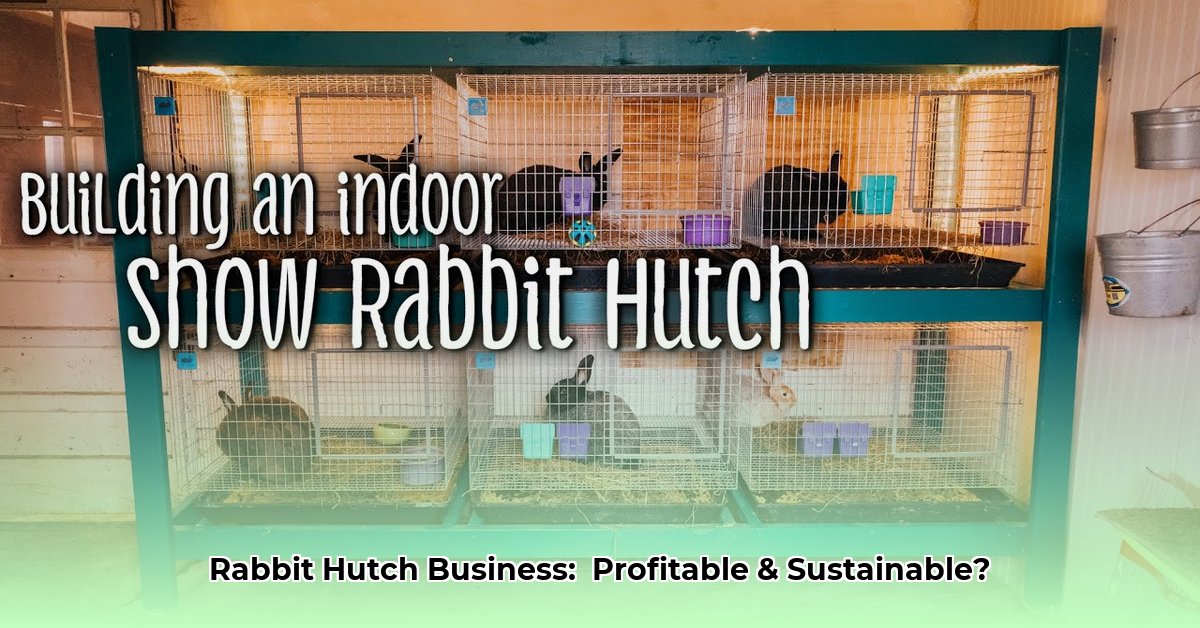
Rabbit Hutch Indoor Tractor Supply: Your Path to Successful Indoor Rabbit Farming
Dreaming of starting your own indoor rabbit farm? This guide shows you how to launch a thriving and eco-friendly business, starting with a rabbit hutch from Tractor Supply. It's a rewarding venture, but requires planning and dedication. Let's get started! For larger-scale operations, consider chicken tractor options.
Choosing the Right Rabbit Hutch at Tractor Supply
Your hutch is your rabbits' home, crucial for their health and your success. Tractor Supply offers various options; consider these factors:
Size: Rabbits need space to hop and stretch. Overcrowding leads to stress and health problems (reducing your profits). Choose a hutch size appropriate for the number of rabbits you plan to raise. (Think: A spacious hutch equals happy, healthy rabbits).
Material: Wood is traditional, but wire or plastic hutches are easier to clean and disinfect, essential for disease prevention. Durability is key; you need a hutch that will last. (Consider ease of cleaning and long-term cost-effectiveness).
Ventilation: Good ventilation prevents ammonia buildup, which harms rabbits' respiratory systems. (Poor ventilation is a recipe for respiratory illness and reduced productivity).
Access: Easy access for cleaning and feeding saves you time and reduces stress. Features like pull-out trays simplify waste removal. (Efficient cleaning means healthier rabbits and more time for your business).
Selecting the right hutch is an investment in your rabbits' well-being and your business's success.
Setting Up Your Indoor Rabbit Haven
With your hutch, create a welcoming and healthy environment:
Location: Choose a well-ventilated spot inside, away from drafts and temperature extremes. (Avoid temperature fluctuations; consistent temperatures are key).
Bedding: Use absorbent bedding like straw or hay for warmth and cleanliness. (Clean bedding is essential for hygiene and rabbit comfort).
Food and Water: Place feeders and water dispensers where rabbits can easily access them without spills. (Easy access to food and water promotes efficient feeding and reduces waste).
Enrichment: Provide toys and enrichment items to stimulate your rabbits mentally and physically. (Enrichment reduces stress and promotes overall well-being).
Think of it as creating a rabbit resort; happy and healthy bunnies are more productive.
Sustainable Practices: Feeding and Waste Management
Sustainable farming is about responsible practices:
High-Quality Feed: High-quality rabbit feed is essential. Supplement with fresh hay and vegetables for a balanced diet. Proper storage prevents spoilage and pest infestation. (Healthy feed leads to healthy rabbits and higher productivity).
Waste Management: Rabbit manure is valuable. Composting reduces waste and creates excellent fertilizer, saving you money and potentially creating an additional revenue stream. (Composting is environmentally friendly and potentially lucrative).
Did you know that properly managed rabbit manure can reduce fertilizer costs by up to 50%? This can significantly increase your profit margins.
Market Research: Finding Your Niche and Customers
Turn your efforts into a successful business:
Meat: Locally sourced rabbit meat is a healthy and lean option in growing demand.
Pelts (If Applicable): Some breeds are raised for fur; research the market and regulations thoroughly.
Research your local market to determine pricing and potential customers. Understand the demand and competition before you launch. Direct sales, farmers' markets, and local restaurants are potential outlets.
Facing the Challenges: Problems and Solutions
Starting a business has challenges. Here's how to tackle some common ones:
| Challenge | Solution |
|---|---|
| Disease Outbreaks | Maintain strict hygiene, quarantine new rabbits, and consult a veterinarian immediately. |
| Market Fluctuations | Diversify income streams (e.g., selling manure), build strong buyer relationships, and explore alternative uses for your rabbits. |
| Regulatory Compliance | Thoroughly research and understand all regulations concerning rabbit farming and food safety. |
Careful planning and hard work are vital for your success. Your Tractor Supply hutch is just the beginning. With dedication, you can build a profitable and environmentally friendly rabbit farming business.
How to Start a Sustainable Rabbit Farming Business: Key Steps
Key Takeaways:
- Rabbits offer high protein yield with relatively low environmental impact.
- Success requires meticulous management of business planning, marketing, and disease prevention.
- Profitability links to efficient feed management and breed selection aligning with market demand.
- Indoor rabbit farming minimizes land use and facilitates year-round operation.
- Tractor Supply provides hutch materials and supplies.
Here’s a step-by-step guide:
Secure Housing: Indoor rabbit hutches from Tractor Supply improve efficiency and biosecurity. Consider hutch size for breed and population. Ensure adequate ventilation and easy access for cleaning.
Choose Your Breed: Research breeds known for high fertility, efficient feed conversion, and meat quality demanded in your market.
Sustainable Feed Management: Minimize feed costs by sourcing locally and sustainably. Grow your own feed options or negotiate bulk purchases. Maintain a strict feeding schedule to minimize waste.
Waste Management: Implement efficient composting systems to turn rabbit waste into valuable fertilizer.
Disease Prevention and Biosecurity: Implement strict biosecurity measures (hygiene, veterinary care, quarantine). Regular vaccination protects your herd.
Marketing and Sales Strategy: Develop a marketing plan targeting customers who value sustainably raised meat. Explore direct sales, farmers’ markets, CSA programs, and partnerships with restaurants or retailers.
Financial Planning and Sustainability Metrics: Create a business plan including startup costs, revenue projections, and key performance indicators (KPIs) such as feed conversion rates and waste management efficiency. Track your metrics to improve efficiency and profitability.